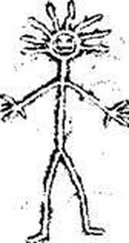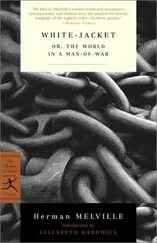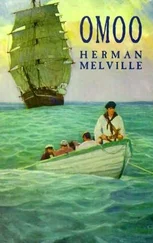“Get the children first,” said Lorimer.
One by one, they pulled everyone out into the fresh air. They were badly wounded and barely conscious. One of the men produced a knife but was too weak to use it. As Lorimer started to inspect their wounds, the tracker and two other men rode over after having made it around the smoke cloud.
“Sneaky bastards,” he said. “Crawled and hid under the smoke. I thought they had worked some Indian magic and vanished.”
Lorimer did not bother to look up. He was busy tending to the wounded.
“We’re loading the wagon with the hides. We’ll split the ponies,” added the tracker.
“The wagon and the ponies stay. Take the rest and leave.”
The tracker was astounded. Was Lorimer staying? A heated discussion over the ponies ensued. Soon they were both screaming. Håkan could not make out the words, but the argument ended with Lorimer getting some gold coins from his saddle satchel and sending the men off. Fuming, the tracker took the money, turned around, and told the men to pack up their loot and leave the ponies. Before going back to the wounded, Lorimer faced Håkan.
“Most of these people will die without my help,” he said. “I will stay. Fort Squibb is only a few days from here. Go with them.”
“I will stay.”
“Go.”
“I will help.”
Lorimer nodded and asked him to tie off a tourniquet on a man’s leg. How all those badly wounded people had managed to hide under the smoke was a mystery. Fractured skulls, splintered bones, chests and limbs crushed by gunshots, entrails barely held in place by shaking hands. Curiously, most of the children were conscious and more or less untroubled by the smoke. As the sooty cloud dissipated, a few relatively unscathed adults started looking around, as if they had suddenly woken up in a new, unknown land.
They were all lean. There was nothing consistent about their attire—leather robes, ponchos, trousers, loincloths, blouses, sandals, boots, bare feet, headbands, hats, kerchiefs. Underneath the gore, they were all extremely clean, unlike all the white men and women Håkan had seen since arriving in California. Up to that moment, all the faces Håkan had encountered in the desert had been vandalized by the elements—shredded skin under which the flesh glistened like a disgustingly opulent fruit that, in time, inevitably acquired the texture and color of rotten wood. But these faces revealed no struggle with their surroundings. Håkan thought that Lorimer’s face aspired to become one of those faces.
Håkan realized now that he had always thought that these vast territories were empty—that he had believed they were inhabited only during the short period of time during which travelers were passing through them, and that, like the ocean in the wake of a ship, solitude closed up after the riders. He further understood that all those travelers, himself included, were, in fact, intruders.
The man who had wielded his knife tried to attack Lorimer again but was struck down by pain. His left foot was backwards—his heel where the toes should have been, the skin twisted into a black spiral, torn at the ankle, revealing bone and tendon. There was room for awe and curiosity in Håkan’s horror. Lorimer held the furious man’s head and wiped his beaded brow.
“We are friends,” Lorimer said.
The man stared up, still enraged. Lorimer took his gun out of the holster, showed it to the man, holding it by the barrel with his thumb and index finger, like a filthy animal, and tossed it aside.
“Friends,” Lorimer repeated.
His fury yielded to confusion, but the man seemed to understand that they meant no harm. Lorimer asked Håkan to fetch his instruments, drugs, and salves from the wagon. As a first measure, they administered the sedative tincture to those who were in excruciating pain or needed to be operated on. Among those who made a quick recovery was an old man with short, very precisely trimmed white hair—an exception among his long-haired companions. Lorimer’s work would have proved impossible without his help. Nobody dared to oppose his advice or his commands. If not the leader of the community, the short-haired man was an uncontested authority, and the more drastic treatments, such as amputations, could never have been carried out without his endorsement. This man also turned out to be an excellent physician with a subtle understanding of the human frame, and he had saved invaluable resources from the plunder—a local anesthetic made with crushed herbs and mushrooms, some ashes with miraculous healing properties, and other soothing unguents and poultices. He and Lorimer discussed each case through gestures. Håkan watched and learned.
In addition to his salves and his medical talent, the short-haired man made two contributions that altered Lorimer’s understanding of surgical procedures and greatly influenced Håkan’s future. When the naturalist was about to perform his first operation, the short-haired man grabbed his hand before the scalpel broke the skin. Gently, he led Lorimer to a pot of water boiling over a fire. In it were the man’s own instruments. Through signs, he asked Lorimer to submerge his scalpel in the boiling water. Lorimer was confused but in the end did as he was told. The short-haired man hummed a melody while the instruments boiled away. After a while, he took them out with a pair of wooden tongs, making sure they never touched the parts that would be in contact with the patient. The second thing he did was wash his hands. For this, he used a strong alcoholic beverage he had salvaged from the raid. In some cases, he used the same liquid to clean the wounds. Before each operation, these two procedures—instrument boiling and hand washing—were repeated. In time, an amazed Lorimer had to conclude that the incredibly low number of infections must have been related to the man’s rituals.
“Our learned scholars in our marbled academies have failed to understand what this wise man has gathered from his observation of nature—that the putrefaction that flowers in a wound and the diseases that bloom in an open injury can be nipped in the bud. The very seed of these maladies can be boiled and wiped away before it takes root in the flesh.”
Håkan’s memory of what followed that first operation was obscured by thick smudges of blood, but behind the crimson-black swirls, his recollections had the surgical precision of a picture painted with a single-hair brush. Until sunset, they extracted pellets buried in the deepest fibers of the flesh, fitted the serrated edges of broken bones into one another, reset viscera and stitched abdomens shut, cauterized wounds with white-hot irons, sawed off arms and feet, and sewed flaps of skin around muscle and fat and bone into rounded stumps. As he became absorbed by the work, Håkan discovered a form of impassive care completely new to him. His detachment, he felt, was the only proper approach to tending to the wounded. Anything else, beginning with compassion and commiseration, could only degrade the sufferers’ pain by likening it to a merely imaginary agony. And he had learned that pity was insatiable—a false virtue that always craved more suffering to show how limitless and magnificent it could be. This sense of responsibility exposed a fundamental disagreement with Lorimer’s doctrines. The naturalist claimed that all life was the same and, ultimately, one. We come from other bodies and are destined to become other bodies. In a universe made of universes, he would often say, rank becomes meaningless. But Håkan now sensed the sanctity of the human body and considered every glimpse underneath the skin a profanation. These were not prairie hens.
When it got too dark to continue operating and ministering to the wounded, Lorimer walked up to one of the burros with his rifle, composedly took aim at its head, and shot it dead. Two men with minor injuries helped him butcher the animal. The weak were given warm blood to drink. The healthier ones chose their own cuts—once the tongue, liver, and pancreas had been carved out and eaten, they broke the thighbones and sucked out the marrow. After grilling some ribs and salting the remaining edible pieces, Lorimer boiled the burro’s head and later fed the broth to the feeblest. Two women baked a serpentine kind of bread. They rolled a long cylinder of dough and then twisted it in a spiral around a stick, which was placed at an angle on an X made of two other sticks over some embers. The dough spiral was turned at regular intervals, and finally the stick was removed from the center. The coiled bread was passed around, and each person broke off a ring of the spiral, charred on the outside and doughy on the inside.
Читать дальше












